Jellyfish are some of the most captivating creatures in the ocean, with their graceful movements and unique appearance. While many species are small, others grow to impressive sizes, making them stand out in the vast waters. The largest jellyfish species can have bells stretching several feet wide, with tentacles that span even greater lengths. These giant jellyfish play important roles in marine ecosystems, from controlling plankton populations to providing food for larger predators. In this list, we explore 18 of the biggest jellyfish in the world, each offering a glimpse into the incredible diversity of ocean life.
Lion’s Mane Jellyfish (Cyanea capillata)
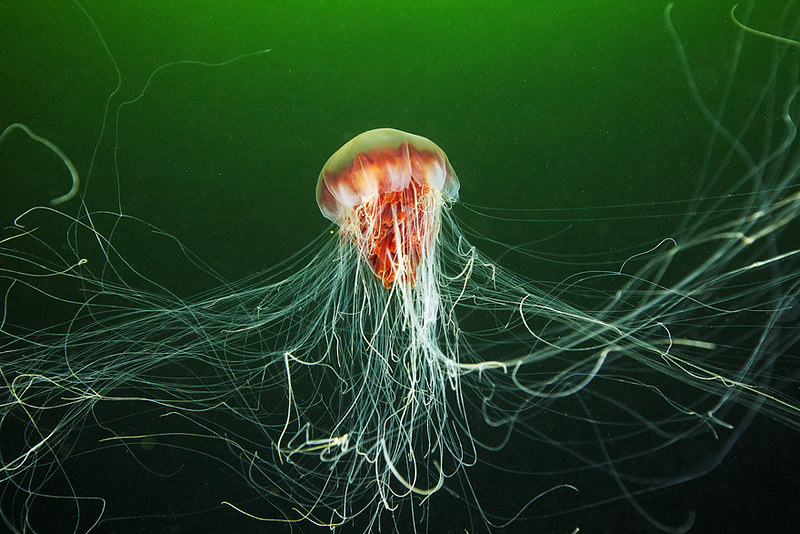
The Lion’s Mane Jellyfish holds the record for the largest known jellyfish, with its bell growing up to 7 feet in diameter and tentacles extending over 120 feet—longer than a blue whale. It thrives in the colder waters of the North Atlantic and Arctic Oceans. Its bright orange or red bell and long, hair-like tentacles give it a striking appearance, resembling a lion’s mane. Despite its intimidating size, it primarily feeds on plankton, small fish, and other jellyfish. While its sting can be painful, it’s generally not dangerous to humans. This jellyfish is an important predator in its environment, helping to maintain a balance in marine populations.
Nomura’s Jellyfish (Nemopilema nomurai)
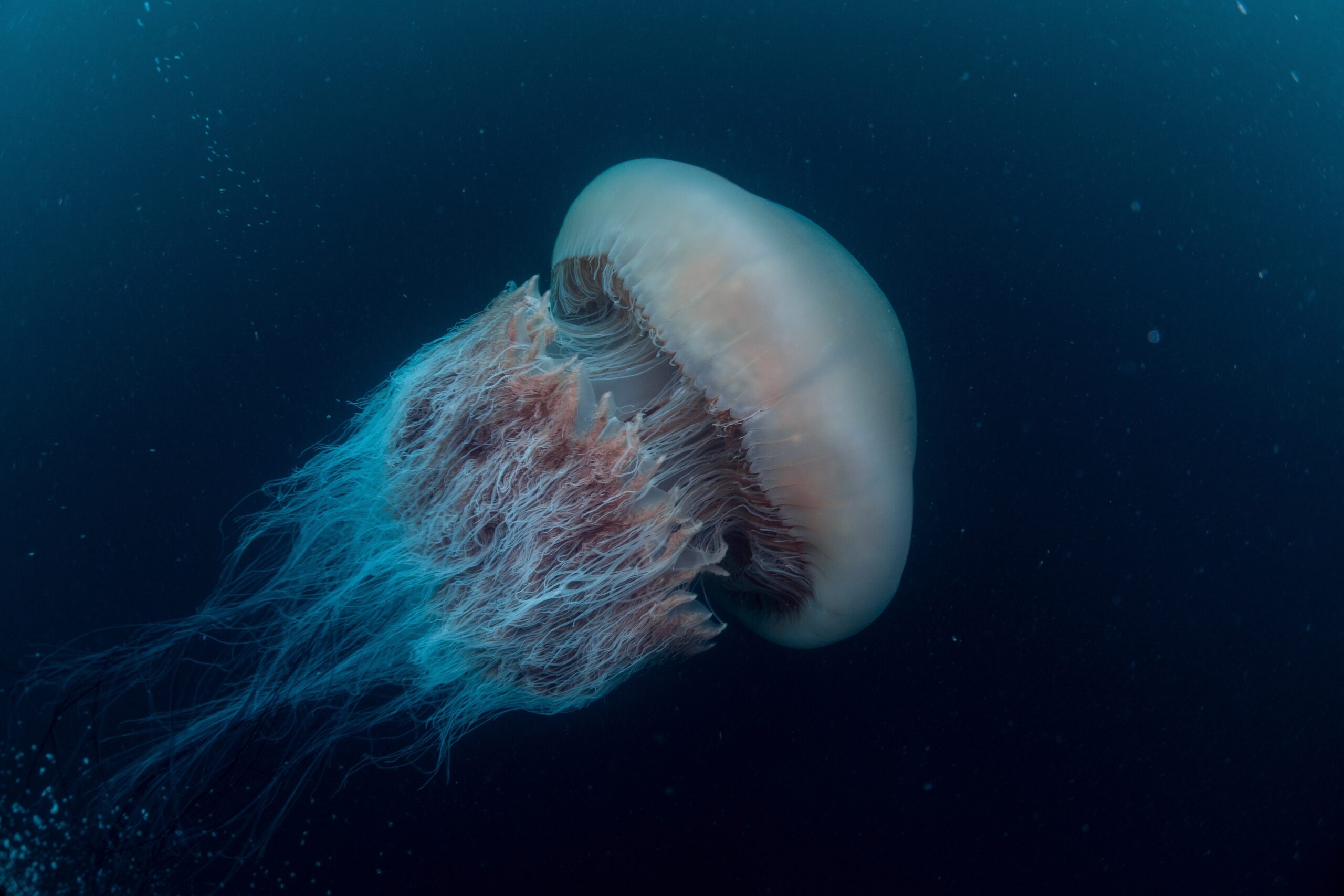
Nomura’s Jellyfish is one of the heaviest jellyfish species, weighing up to 450 pounds, and its bell can grow to over 6.5 feet in diameter. It is mainly found in the waters between Japan and China, and its population can boom in certain years, causing serious problems for fisheries by damaging equipment and depleting fish stocks. Despite its size, its sting is not considered particularly harmful to humans. However, its presence can disrupt marine ecosystems when populations grow out of control. Warming ocean temperatures and human activity may contribute to these population surges. This jellyfish highlights the impact that climate change can have on marine life.
Pacific Sea Nettle (Chrysaora fuscescens)
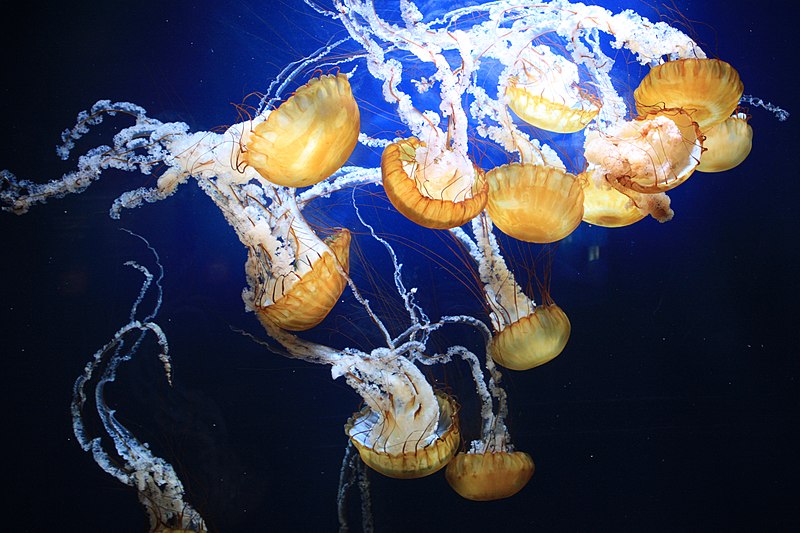
This beautiful jellyfish can grow up to 3 feet in diameter, with tentacles stretching up to 15 feet. Found in the eastern Pacific Ocean, particularly along the west coast of North America, the Pacific Sea Nettle has a distinctive deep red and yellow coloration. It preys on zooplankton, small fish, and even other jellyfish using its long, stinging tentacles. Its sting can cause discomfort to humans but is not life-threatening. The Pacific Sea Nettle is frequently seen in aquariums due to its stunning appearance. Its presence helps control populations of smaller marine organisms, making it a key predator in its habitat.
Black Sea Nettle (Chrysaora achlyos)
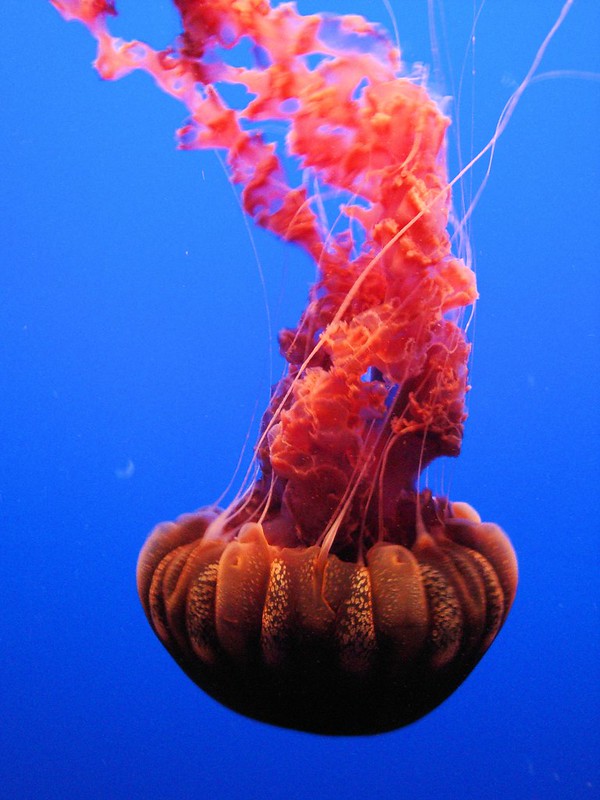
The Black Sea Nettle is a large and striking species, with a bell that can grow up to 3 feet in diameter and tentacles that can extend more than 25 feet. It is found off the coast of California and Baja California, often in deep waters. Its dark, almost black color makes it unique among jellyfish, earning it the nickname “the black jelly.” This jellyfish’s sting can cause moderate discomfort, but it poses no major threat to humans. It feeds on small fish and zooplankton, using its long tentacles to capture prey. Despite its intimidating appearance, the Black Sea Nettle plays a vital role in the marine food web.
Australian Box Jellyfish (Chironex fleckeri)
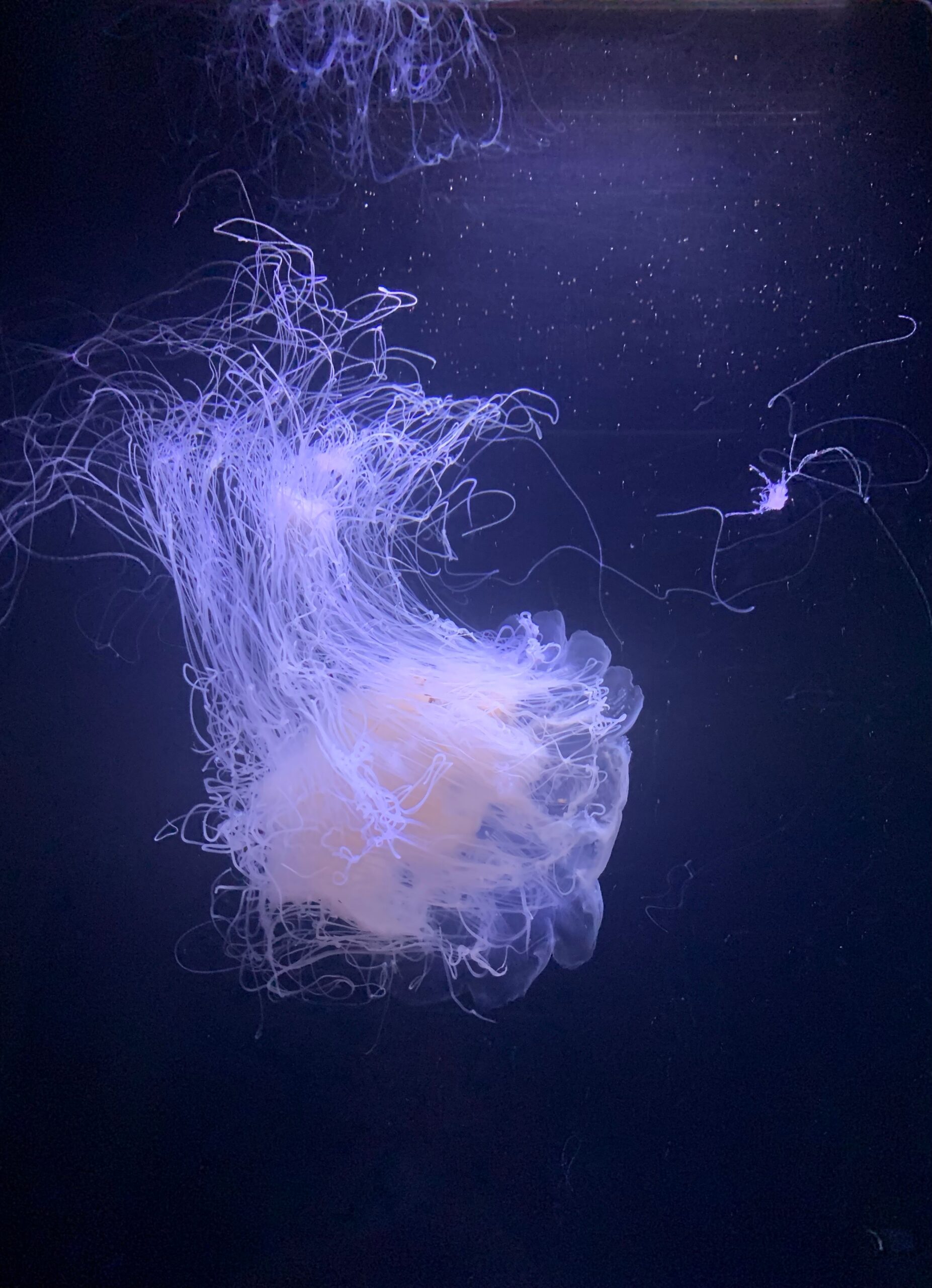
While its bell only grows up to 12 inches in diameter, the Australian Box Jellyfish is considered one of the deadliest creatures in the ocean due to its potent venom. Its nearly invisible, cube-shaped bell and up to 10-foot-long tentacles make it a stealthy hunter in the warm coastal waters of northern Australia and Southeast Asia. The venom from its tentacles can cause heart failure in humans within minutes if not treated quickly. Despite its size, this jellyfish is highly feared for the risk it poses to swimmers. Box jellyfish stings have led to significant advancements in first aid and treatment techniques, including the use of antivenoms.
Barrel Jellyfish (Rhizostoma pulmo)
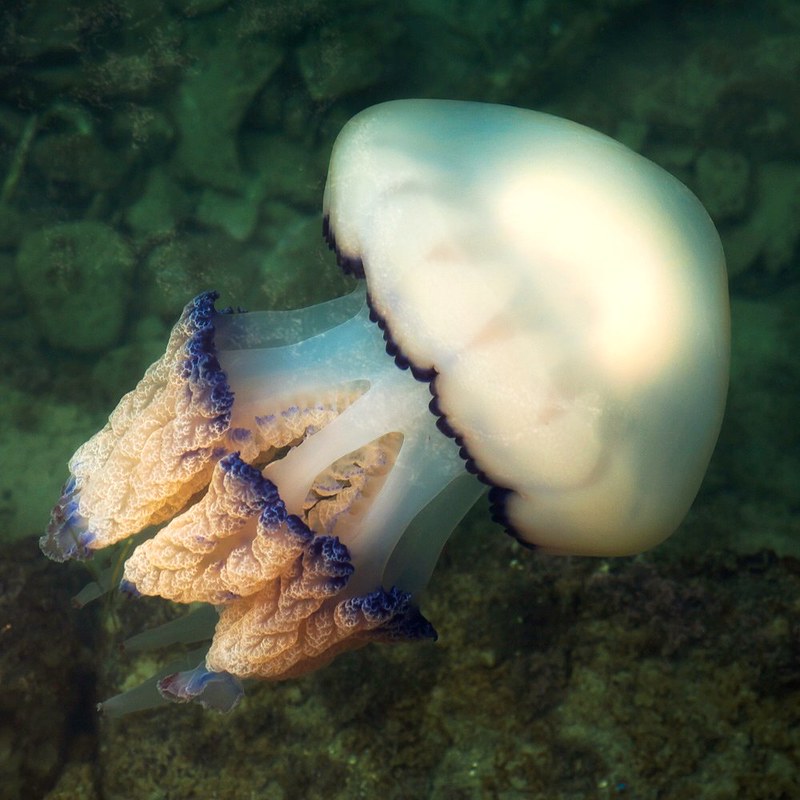
The Barrel Jellyfish, also known as the Dustbin-lid Jellyfish, can grow to over 5 feet in diameter and weigh up to 77 pounds, making it one of the largest jellyfish in European waters. It is often seen in the North Atlantic and Mediterranean seas, where its large, translucent bell drifts near the surface. Despite its size, the Barrel Jellyfish poses little threat to humans as its sting is relatively mild. It feeds on plankton and other small organisms, using its large bell to filter the water. Barrel Jellyfish are often spotted washed up on beaches in the summer, especially during population blooms.
Fried Egg Jellyfish (Cotylorhiza tuberculata)
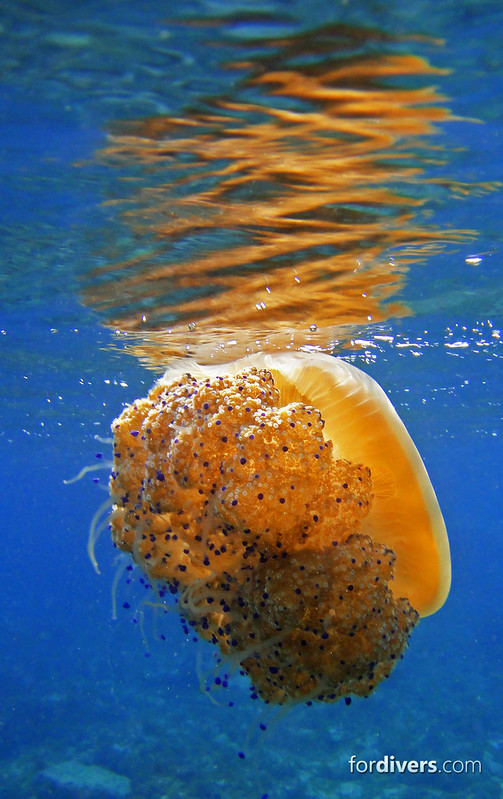
With a bell that can grow up to 1 foot in diameter, the Fried Egg Jellyfish is easily recognizable due to its bright yellow center, resembling a fried egg. It is commonly found in the Mediterranean Sea, where it prefers warmer, shallow waters. This jellyfish’s sting is harmless to humans, making it a popular sight for snorkelers and divers. Its diet consists mainly of plankton, which it captures using its short, club-like tentacles. The Fried Egg Jellyfish has a symbiotic relationship with zooxanthellae, algae that live inside its tissues and help provide energy through photosynthesis. This species is an excellent example of how jellyfish can form unique relationships with other organisms.
Pink Meanie (Drymonema larsoni)
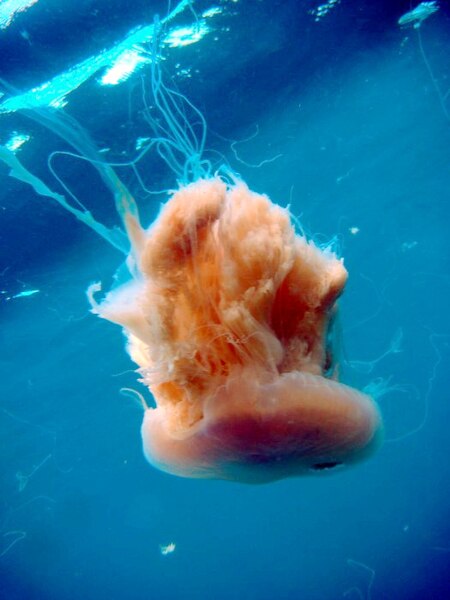
The Pink Meanie is a rare and fascinating jellyfish, capable of growing up to 3 feet in diameter, with tentacles extending as far as 70 feet. It is primarily found in the Gulf of Mexico and is known for preying on other jellyfish, particularly Moon Jellies. Its pale pink color and large size give it a delicate yet imposing appearance. Despite its name, the Pink Meanie’s sting is relatively mild and not dangerous to humans. This species’ predatory behavior is unusual, as most jellyfish feed on plankton rather than other jellyfish. The Pink Meanie’s presence indicates a complex marine food chain where jellyfish can become both predator and prey.
Blubber Jellyfish (Catostylus mosaicus)
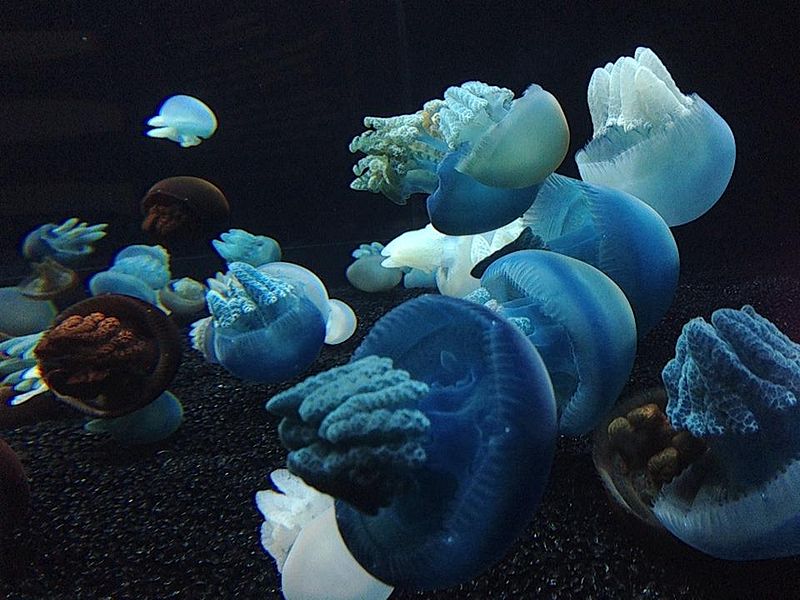
The Blubber Jellyfish, with a bell up to 1.5 feet in diameter, is a common species found in the Indo-Pacific region, especially around Australia. Despite its somewhat fearsome name, the Blubber Jellyfish poses little danger to humans as its sting is mild. It has a bell that is typically a mix of blue, pink, and white hues, giving it a striking appearance. This jellyfish is a filter feeder, using its tentacles to capture plankton from the water. Blubber Jellyfish are often seen in large swarms, especially during warmer months when conditions are ideal for their reproduction. Their abundance can sometimes disrupt local ecosystems by overwhelming fish populations.
Cannonball Jellyfish (Stomolophus meleagris)
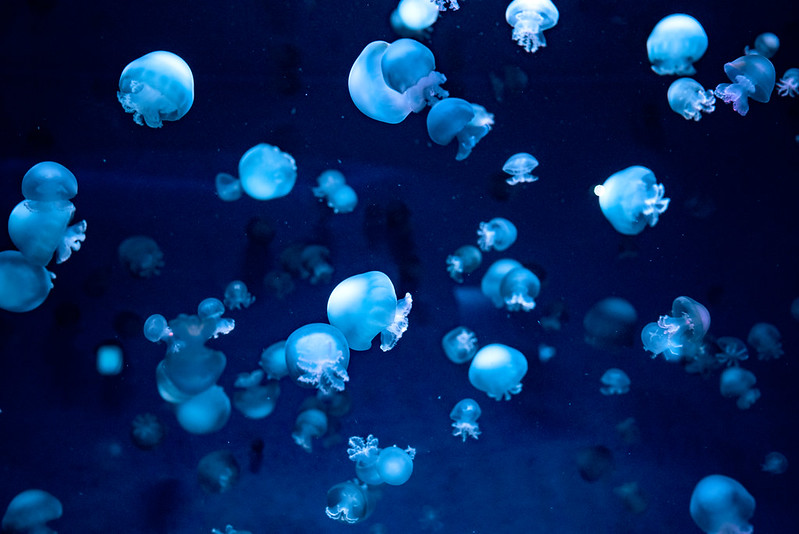
Cannonball Jellyfish are smaller than some of the giants on this list, with a bell growing up to 10 inches in diameter, but they are notable for their dense, round shape, which resembles a cannonball. Found in the western Atlantic, Gulf of Mexico, and Pacific waters, these jellyfish are often harvested for food in certain countries, where they are considered a delicacy. Their sting is mild, and they pose little threat to humans. Cannonball Jellyfish are important to the marine food chain, providing sustenance for larger predators like sea turtles. They also help maintain the health of their ecosystems by controlling plankton populations.
Moon Jellyfish (Aurelia aurita)
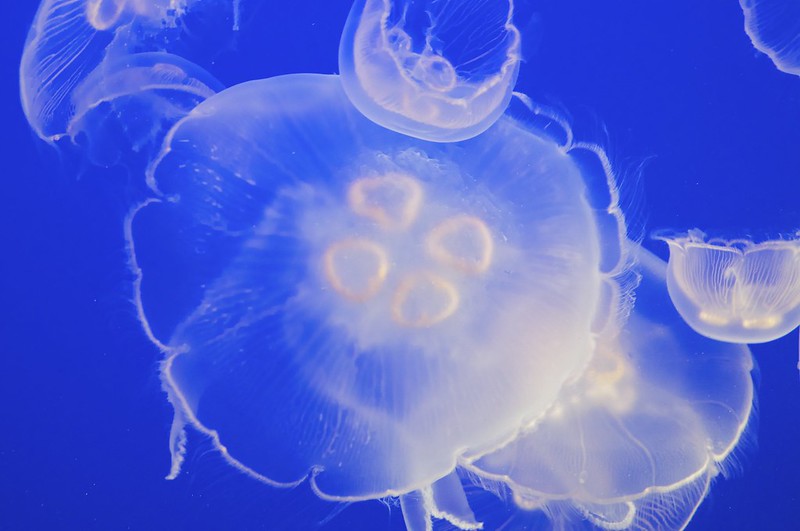
The Moon Jellyfish is perhaps the most widely recognized jellyfish species due to its distinct translucent bell, which grows up to 16 inches in diameter. Its delicate, almost ethereal appearance is enhanced by the four horseshoe-shaped gonads visible through the bell. Found in coastal waters around the globe, Moon Jellies are known for their gentle nature and weak sting, which is harmless to most humans. They feed primarily on zooplankton, small fish, and other jellyfish, using their short tentacles to capture prey. Moon Jellies are a favorite exhibit in aquariums worldwide due to their beauty and peaceful demeanor. They are a crucial part of many marine ecosystems, helping to balance plankton populations.
White-spotted Jellyfish (Phyllorhiza punctata)
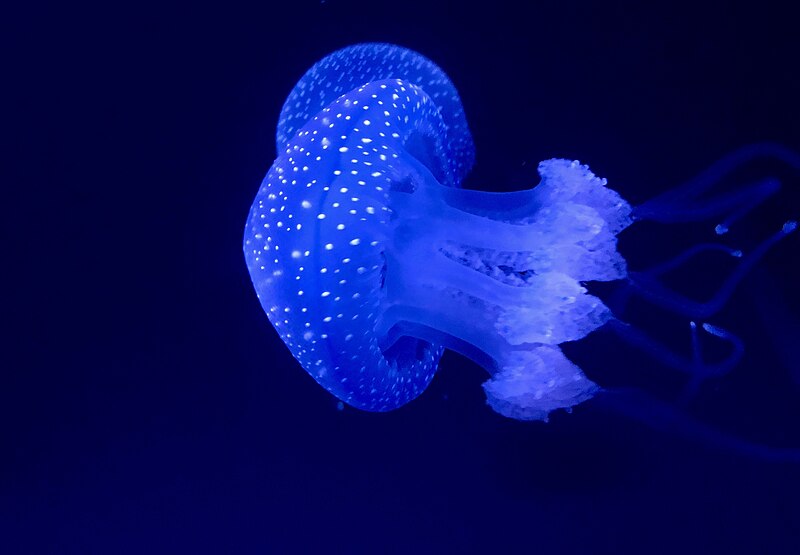
The White-spotted Jellyfish is a large species, with a bell that can reach up to 2 feet in diameter. It is distinguished by the white spots that cover its translucent bell, giving it a striking, otherworldly appearance. Found primarily in the warm waters of the Pacific Ocean, it has also spread to other regions, including the Gulf of Mexico, where it is considered an invasive species. Its sting is harmless to humans, and it primarily feeds on plankton, filtering large volumes of water to sustain itself. The White-spotted Jellyfish is a filter feeder that can consume up to 50,000 liters of water a day, making it an important part of marine ecosystems but also a potential disruptor when introduced to new environments.
Spotted Jellyfish (Mastigias papua)
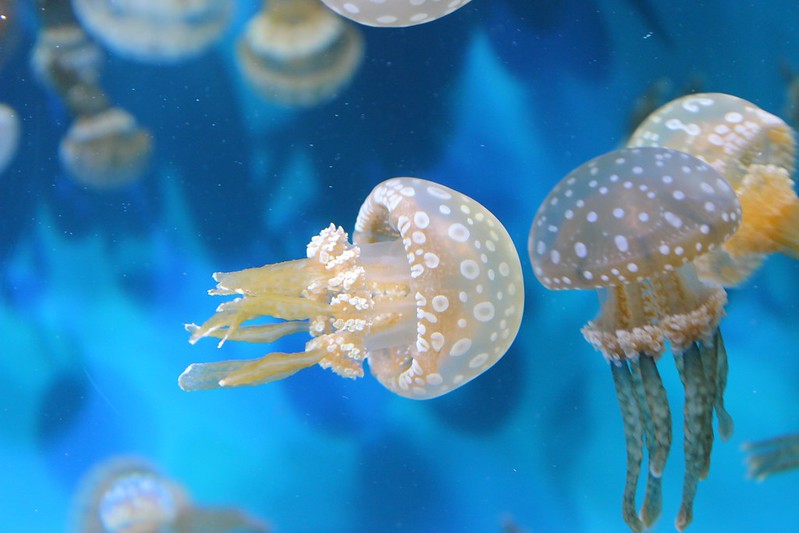
The Spotted Jellyfish, also called the Lagoon Jellyfish, can grow up to 1 foot in diameter, with its bell adorned by numerous white spots. Its pale blue or greenish hue makes it visually striking in the warm waters of the Indo-Pacific, particularly around Australia, Indonesia, and Japan. This jellyfish is unique because, unlike most jellyfish, it doesn’t have long stinging tentacles. Instead, it relies on a symbiotic relationship with algae (zooxanthellae) that live inside its tissues, providing it with energy through photosynthesis. Its sting is so mild that humans barely feel it, making it popular among divers and snorkelers. The Spotted Jellyfish is a perfect example of how marine species can form cooperative relationships with other organisms for survival.
Mauve Stinger (Pelagia noctiluca)
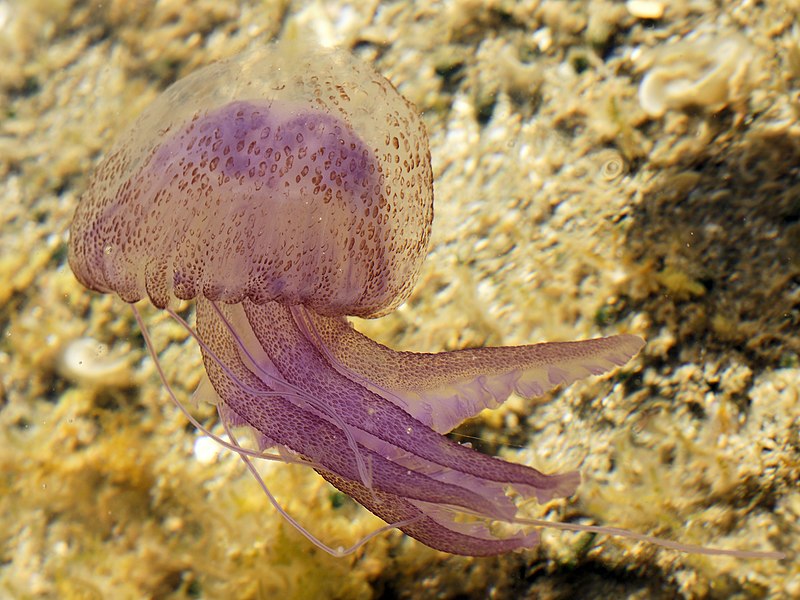
The Mauve Stinger is a bioluminescent species, with its bell reaching up to 6 inches in diameter, glowing a soft pinkish-mauve in the darkness of the ocean. Found in the Atlantic, Pacific, and Mediterranean, this jellyfish is often a stunning sight in the open water. Its ability to produce light through bioluminescence makes it one of the most fascinating species in the jellyfish world, especially when seen in large swarms at night. Although small, the Mauve Stinger has a painful sting, which can cause skin irritation in humans. Its tentacles, extending up to 10 feet, help capture small fish and plankton. The Mauve Stinger is a reminder of the beauty and danger that coexist in the ocean.
Cauliflower Jellyfish (Cephea cephea)
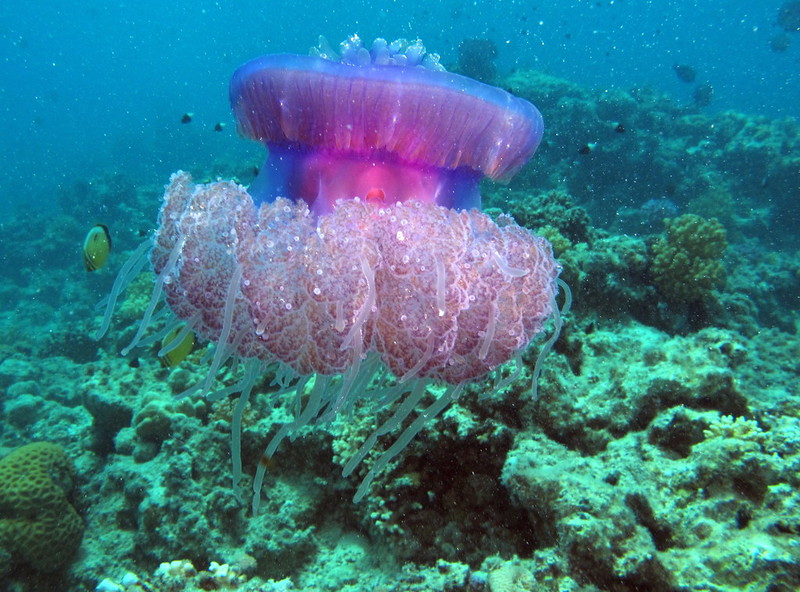
Named for the crown-like structures on its bell that resemble a cauliflower, this jellyfish can grow up to 1.5 feet in diameter. The Cauliflower Jellyfish is commonly found in the tropical waters of the Indo-Pacific and the Red Sea. Its bell is typically blue or violet, and while its appearance might seem threatening, its sting is relatively mild. This species moves slowly through the water, relying heavily on ocean currents to transport it. It feeds on plankton and small fish, which it captures using its trailing tentacles. The Cauliflower Jellyfish’s slow, graceful movements make it a serene but essential predator in its ecosystem.
Mangrove Jellyfish (Cassiopea)
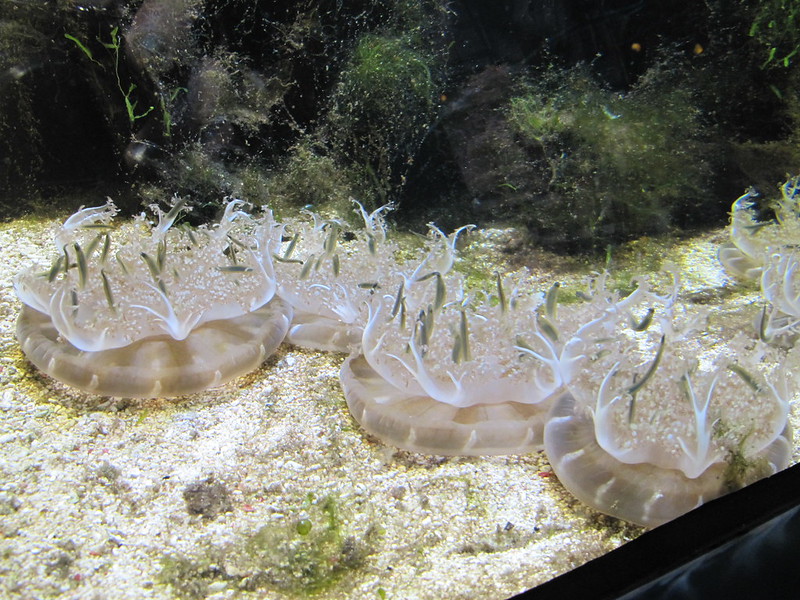
The Mangrove Jellyfish is unique in that it spends most of its life upside down, resting on the ocean floor with its tentacles facing upward. Growing up to 14 inches in diameter, it is found in shallow waters like lagoons, bays, and mangrove swamps, mainly in the Caribbean and Indo-Pacific. The jellyfish harbors symbiotic algae in its tissues, which provide energy through photosynthesis. Instead of actively hunting, the Mangrove Jellyfish absorbs sunlight, much like a plant, making it one of the few jellyfish with this kind of adaptation. Its sting is mild, and it is more likely to be a passive presence in the ecosystem than a predatory threat. This jellyfish is a perfect example of how marine life can thrive in unconventional ways.
Sea Wasp (Chironex yamaguchii)
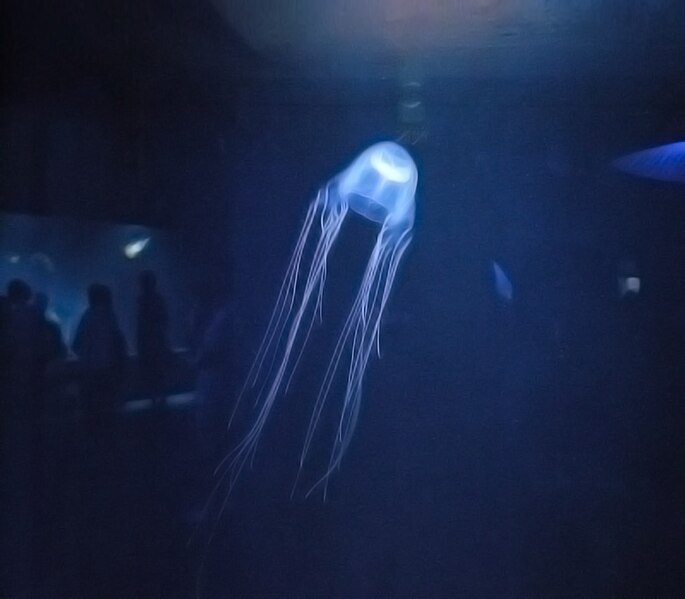
Though not the largest jellyfish, the Sea Wasp is one of the most dangerous. Its bell, which only grows up to 12 inches across, is nearly transparent, making it difficult to see in the water. Found mainly in the waters around Japan and Southeast Asia, the Sea Wasp is a close relative of the Box Jellyfish. Its venom is extremely potent, capable of causing cardiac arrest in humans within minutes if stung. The tentacles, which can extend up to 10 feet, are covered in thousands of stinging cells, each capable of delivering a painful sting. Despite its small size, the Sea Wasp’s deadly reputation makes it one of the most feared creatures in the ocean.
Flame Jellyfish (Rhopilema esculentum)
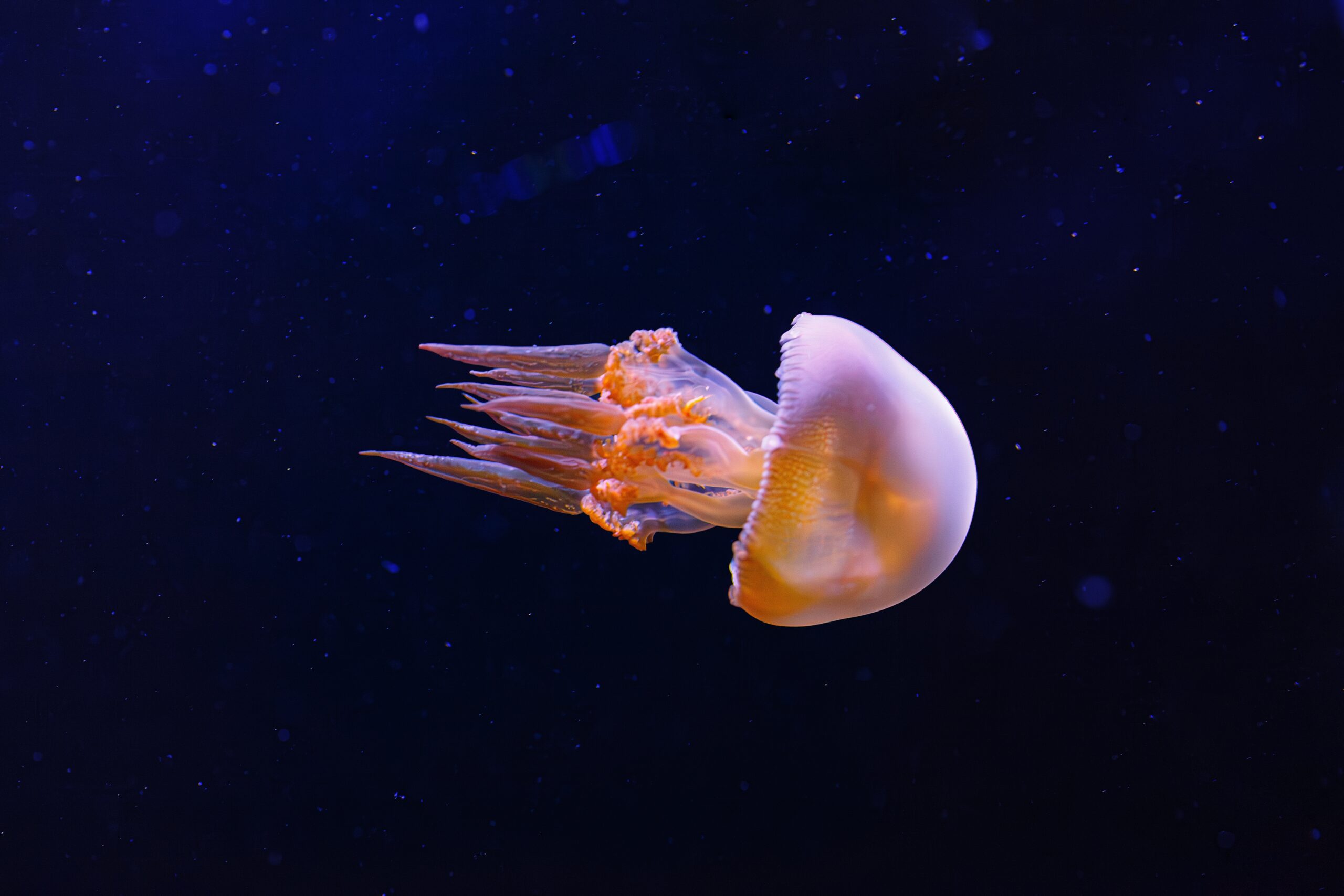
The Flame Jellyfish, known for its vibrant red and orange bell that resembles a flickering flame, can grow up to 20 inches in diameter. Found primarily in the waters around China, Korea, and Japan, it is harvested for food in many Asian countries, where it is considered a delicacy. Despite its size and dramatic appearance, the Flame Jellyfish’s sting is relatively mild and poses little threat to humans. This jellyfish is often seen in large swarms, especially during the warmer months when conditions are ideal for reproduction. Its role in marine ecosystems includes feeding on plankton and small marine organisms, making it an important species in controlling plankton populations.
This article originally appeared on Rarest.org.
More From Rarest.Org
Throughout history, countless architectural landmarks around the world have been lost to demolition, whether due to modernization, war, or neglect. Many of these structures held significant cultural, historical, or architectural value, making their destruction all the more tragic. Read more.
Forgotten musical instruments, once pushed aside by modern innovations or changes in musical tastes, are now experiencing a resurgence in value. From rare string instruments to unique wind instruments, collectors are willing to pay high prices for these historical treasures. Read more.



